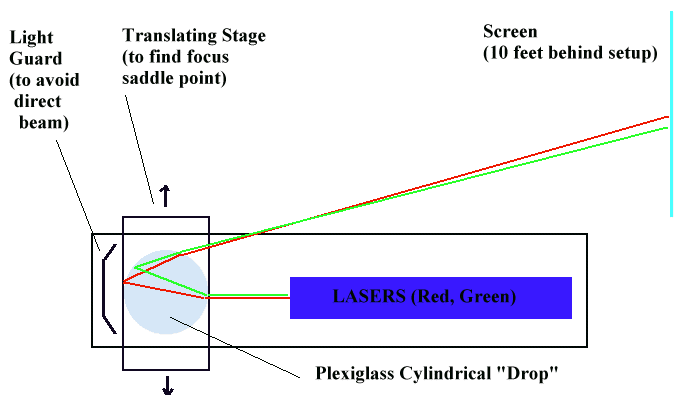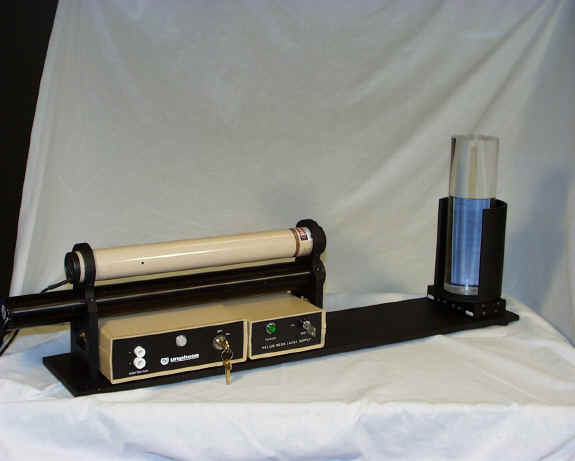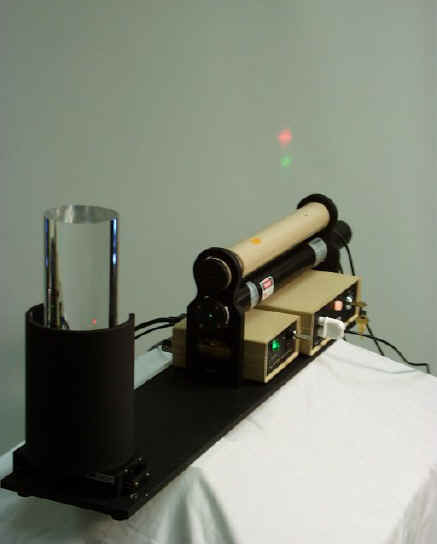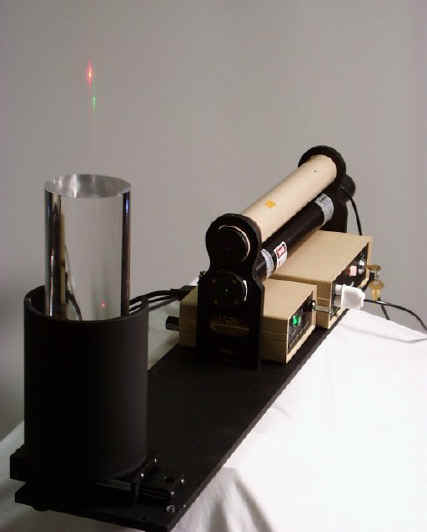
RAINBOWS : USE LASER BEAM RAY TRACING TO EXPLAIN RAINBOW FORMATION
Red and green lasers are pointed into a plexiglass cylinder. The refractions and internal reflections permit visualization of processes at work in rainbow formation.

Schematic of the experiment. The translation stage allow positioning of the "drop" to illustrate the effects of sunlight hitting all across the drop face (taken here one location at a time of course). As the drop is translated across the sun-beam the spots move uniformly across the screen. That is, until the saddle point is approached. About 2/3 of the radius out, the spot on the screen slows down its motion as the drop is translated. This represents the position near which many beams of light are brought to essentially the same focus. This beaming is what makes the rainbow visible at 42 degrees (for the primary rainbow). Since the index of refraction from Plexiglass is different from that for water, in this demonstration the focus is at a shallower angle.

Actual setup. Turn lasers on after orienting to prevent student exposure to beams.

Proper configuration. Lasers pointed towards class, but light guard prevents direct exposure. Note separation of red and green beams. Needs explanation of inversion of order when you look at projection on a screen vs. when you would look towards the "drop" from the screen position.

Beam separation and brightening near the saddle point. The bright point corresponds to that location across the "drop" face where adjacent points are brought to the same location on the screen. This concentration of rays leads to the brightening of the rainbow at a certain critical angle.